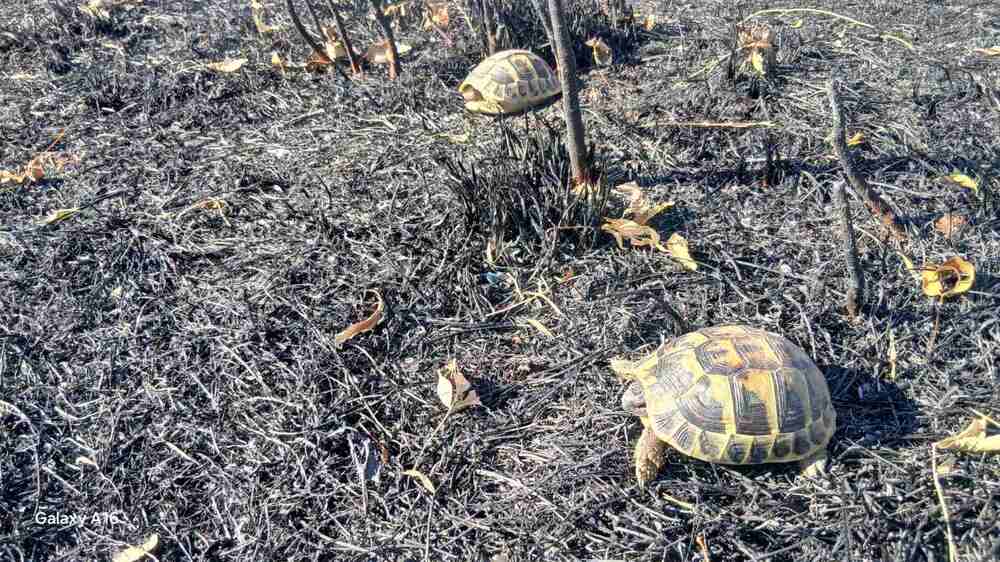site.btaWildlife in Bulgaria’s Burnt Areas May Take 40–50 Years to Recover, Expert Says


Between 40 and 50 years will be needed for ecosystems in areas affected by the wildfires in Bulgaria to fully recover their biodiversity, Dr. Rusko Petrov of the Green Balkans Wildlife Rescue Centre told media on Thursday.
He explained that the flames harmed many animals, particularly insects and slow-moving species. “Over the past month, together with students from Trakia University and pupils from the National Vocational High School of Veterinary Medicine, we managed to survey about 80-85% of the burned territories,” Petrov said. During these inspections, they found numerous dead animals, as well as living ones that were given first aid.
“We collected them by the handful, mostly grasshoppers, praying mantises, mole crickets, and snails,” Petrov explained, stressing that their loss disrupts the entire food chain. “Small creatures are the food for larger ones. If they disappear, the rest have nothing to eat,” he warned.
Among the casualties were large numbers of European ground squirrels, with many colonies destroyed. The team also encountered both dead and injured tortoises and hedgehogs, often with limb burns.
In one day alone in the Sakar region, rescuers found 32 storks in urgent need of help. “Yesterday [Wednesday], we discovered two dead white storks near Radnevo. Two more in critical condition, with smoke-damaged respiratory tracts and lung haemorrhages, are currently being treated at the Green Balkans Rescue Centre,” Petrov said. The centre has also admitted a young honey buzzard and several burned nocturnal birds of prey.
Petrov noted that most large wild mammals escaped the fires, as their breeding season occurs earlier and their young were old enough to flee. “In years with earlier wildfires, in April and May, we have found many charred hares and fawns,” he added.
Earlier on Thursday, Dr. Petrov took part in the traditional release of rehabilitated birds of prey near the Kremikovtsi Monastery near Sofia. Returning to the wild were five common kestrels, one common buzzard, one long-legged buzzard, and a northern goshawk.
/KK/
news.modal.header
news.modal.text